How to select the right plastic tubing for the job
Plastic pipe is one area in which there is much to learn. Many factors go into selecting the right material for a project.
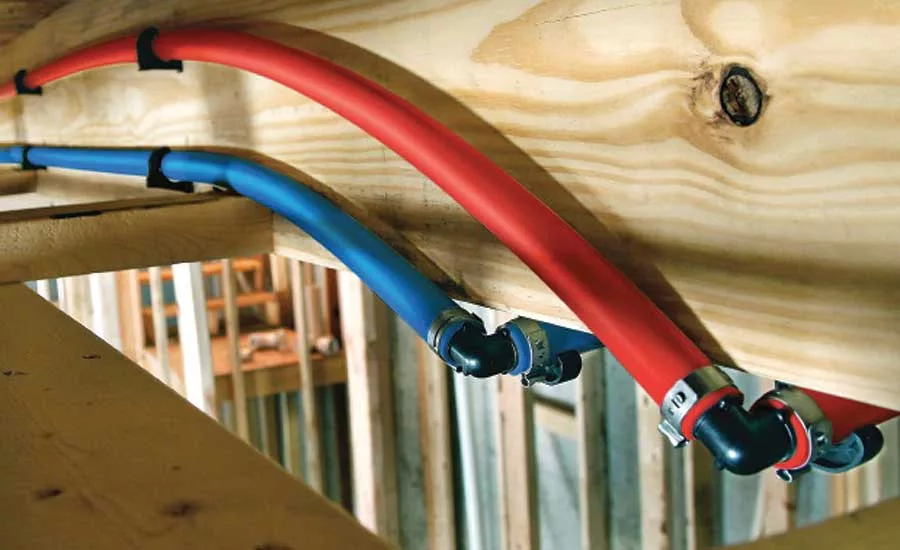
Dow HYPERTHERM Resins for domestic and commercial hot and cold water plumbing pipes offer functional and environmental benefits, including energy-efficiency, reduced water leakage and corrosion resistance. Photo credit: Dow Packaging & Specialty Plastics
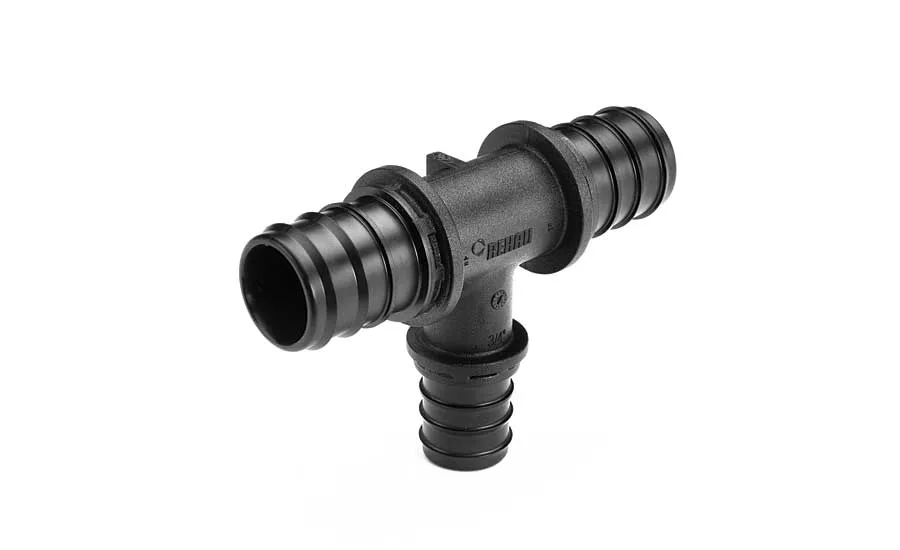
Pictured here is the EVERLOC+ polymer fitting by REHAU.
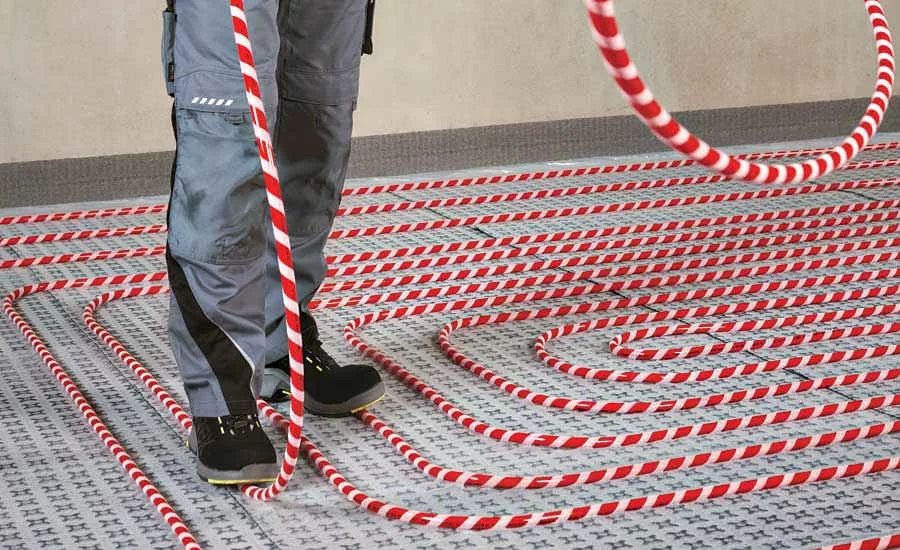
The RAUPEX SPEED radiant overpour fastening system allows contractors to quickly install heating pipe in overpour and concrete installations. Photo credit: REHAU
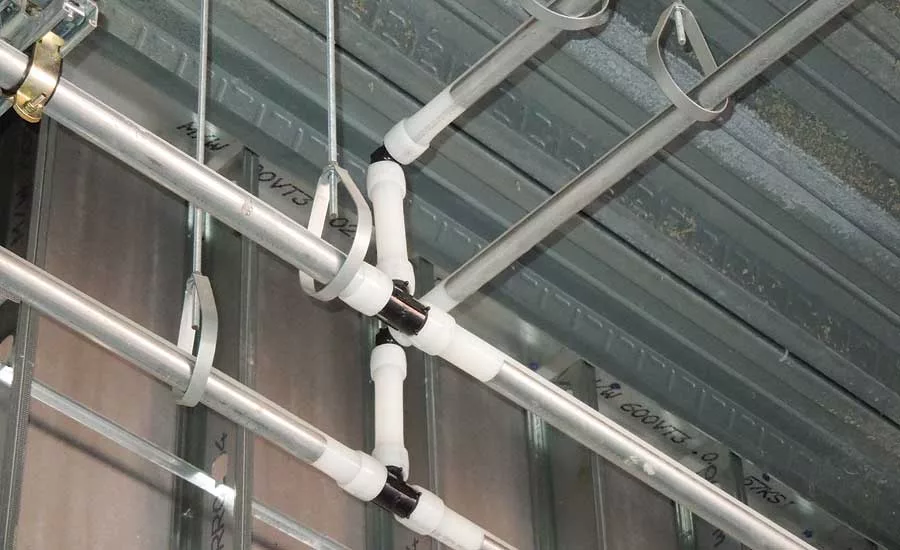
Uponor offers a solution for PEX hydronic heating and cooling applications with back-to-back installation spacing constraints. Photo credit: Uponor
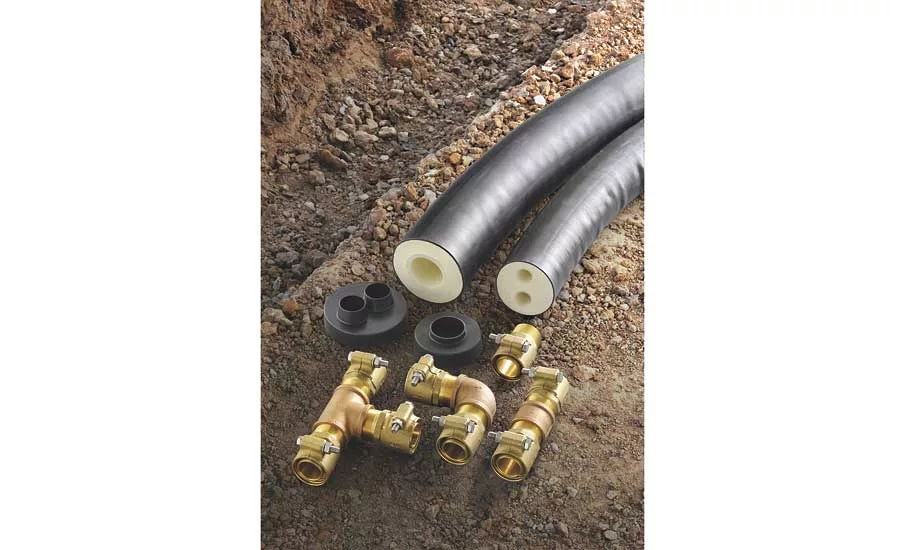
Viega ProRadiant Insulated PEX Barrier Piping System for snow melting systems is ideal for use in areas with high traffic loads or foot traffic. Photo credit: Viega Photo credit: Legend Valve & Fittings

Legend Flex Heating Tube is a PEXb pipe with enhanced flexibility for easy handling and is compatible for use with a variety of fitting systems including ASTM F1807, F1960 and F2080 PEX fittings. Photo credit: Legend Valve & Fittings
Staying on top of new innovations can be difficult, and knowing if the new products are right for a certain job can be even harder. No matter how many years of experience someone has, there is always more to learn.
Meanwhile, taking classes, doing research, and reading articles and white papers help strengthen the value of the contractor to the business as well as the homeowner. Plastic pipe is one area in which there is much to learn.
Many factors go into selecting the right material for a project. Variables can range from technical elements, such as friction loss or code application, to financial aspects, such as material costs and labor, to intangible elements, such as trust in the product and support from the manufacturer, says Aaron Stotko, associate product manager of heating and cooling at Uponor.
“Contractors typically bid products they have experience with, products that have been proven over time, and products that allow them to be profitable,” Stotko says. “For customers who have never used PEX, Uponor offers a wide array of support services — from training to budgetary estimates to design services to jobsite support — all of which are tailored to commercial applications. Offering these services empowers the contractor to make an educated decision with minimal effort on the front end.”
Selecting the right piping system for a job is a two-pronged process, says Ryan Westlund, senior manager, radiant heating and cooling for REHAU’s building solutions division.
“First and foremost, a contractor should look at all the ways that a pipe and its manufacturer will support them,” Westlund says. “Having an experienced manufacturer backing the products that you are installing is extremely important. A contractor needs to be confident that the product will not only be available to them when they need it, but also that there is a sufficient knowledge base to support any questions or installation challenges that may arise.
“Secondly, there is a pipe selection and sizing requirement that the contractor must undertake. While pipe may seem like a simple component in a hydronic system, the contractor must consider many factors to achieve high-performance, cost-effective projects. Attending trainings offered by many manufacturers to understand what differentiates one type of pipe from another can strongly aid in making the best decision for each project. For example, even though PEX pipe has been on the market for several decades, many contractors cannot explain to a project owner the pros and cons of PEXa, PEXb and PEXc. Industry knowledge is not static; to provide the most value to clients, contractors must stay up to speed with industry innovations and regularly pursue continuing education opportunities.”
Contractors will also want to take into consideration the connection method for the tubing and its strength.
“Considering the system-matched connection when making your tubing choice, can influence the installation time and warranty,” says Joshua Quint, product manager of heating and cooling at Viega. “They also will want to select tubing that has the best UV and choline resistance as well as burst pressure and hoop strength. Beyond the tubing itself, it is also beneficial to look at the service that comes with the tubing, such as design support, availability and delivery, warranty, and even loyalty rewards.”
Why choose plastic?
Generally speaking, there is an application for all types of products. PEX tubing should not be thought of as a flat replacement for metal piping in systems, but as a solution that fills a specific niche and offers many advantages in those applications, Quint notes.
“The primary reasons plastic piping is chosen as opposed to traditional metal piping (typically copper in hydronic applications) are reliability and installation efficiency,” Westlund says. “Plastic pipe is lightweight and flexible, making it easier to carry around jobsites and install overhead. Its long coil lengths and flexibility allow long runs that can snake around obstructions, which lowers the number of fittings required, saving installation time and reducing the risk of leaks. Plastic pipe can withstand higher impact than copper and expands when frozen, reducing the need for repairs. It is also corrosion-resistant while copper can produce buildup inside the pipe diameter, causing restricted flow. Plastic pipe is easier and safer to work with on the jobsite with no smoke to inhale or open flames from soldering. Plastic pipe also costs less and reduces jobsite theft because of its low intrinsic scrap value.”
PEX piping offers many advantages over traditional metallic alternatives, Stotko agrees.
“It does not pit, scale or corrode and, therefore, does not require any chemical additives to maintain the integrity of the piping system. PEX piping also improves jobsite safety due to its lighter weight, reducing the likelihood of injuries and eliminating dangerous hot work. Many plastic piping manufacturers also offer extended warranties that can cover the piping system up to 25 years.”
“Radiant designers know well that most hydronic system can be very forgiving,” says Walter Jann, executive vice president at Legend Valve & Fitting. “However, they also know proper design will provide a lifetime of uninterrupted comfort for the homeowner.”
REHAU
Among radiant system manufacturers, REHAU offers a wide range of installation options, addressing the simplest to the most demanding projects. Recent innovations include the RAUMAT radiant heating mat system and RAUPEX SPEED radiant fastening system. By pre-fabricating custom radiant heating circuits, the mat reduces on-site installation time on commercial building projects with large open slab areas.
The radiant fastening system allows contractors to install heating pipe in overpour and concrete installations up to 30% faster. RAUPEX O2 barrier pipe is walked on to the mat without the use of specialized tools, not only saving time but also providing ergonomic advantages. The mat features an adhesive backer that attaches to a range of different thermal insulation, concrete and plywood materials without penetrating the surface, thus protecting thermal, vapor and sound insulation properties. Pipe can be easily detached and repositioned, saving time and reducing waste.
The EVERLOC+ compression-sleeve fitting system provides installation speed, control and security for potable water and heating applications. This patent-pending polymer and lead-free brass fitting system, designed for use with RAUPEX crosslinked polyethylene (PEXa) pipe, uses a proprietary, two-step compression-sleeve technique — first expanding the pipe, then actively compressing the sleeve over the pipe and fitting — providing a secure connection and the time-saving convenience of immediate pressure testing. By using one consistent technique regardless of temperature, weather or pipe diameter, this connection system eliminates many of the complications that can occur during hydronic installations.
“Providing an array of installation methods is key for a contractor to have the most efficient and profitable projects,” Westlund says. “There is not one way to install PEX pipe that will always work for all projects. Since our industry is often working within the confines of how a building’s floors and ceilings are being constructed, successfully integrating radiant heating and cooling requires a variety of installation techniques.”
The company has made an extensive commitment to educating the market about hydronic and plumbing applications. REHAU Academy, the department dedicated to customer training, offers more than 30 seminars — from hands-on technical training to lunch and learns and online AIA CEU programs — for contractors, engineers and architects.
The seminars educate attendees on the company’s products and innovations and provide industry knowledge that can help designers and installers bring more value to their projects. Industry professionals can register online for scheduled seminars or request a seminar at their location.
Uponor
Uponor offers a solution for PEX hydronic heating and cooling applications with back-to-back installation spacing constraints. The ProPEX engineered polymer (EP) opposing-port tees eliminate the need for additional tees and elbows to facilitate piping in two directions, reducing the number of required fittings by 75%.
“Our new ProPEX EP opposing-port tees are a time-, cost- and labor-saving solution for hydronic piping systems,” says Mark Hudoba, director of heating and cooling at Uponor. “Instead of using four fittings to change piping direction in a confined space, an opposing-port tee can do it with just one part.”
Available in 1-, 1¼-, 1½- and 2-inch flow-through sizes with ¾-inch outlets, the ProPEX EP opposing-port tees are listed to ASTM F1960 as well as NSF 14, and they are code-compliant with the International Mechanical Code and Uniform Mechanical Code for hydronic heating and cooling applications.
“Uponor provides a partnership that enables mechanical contractors to positively impact employee health and safety as well as profitability and project schedules while also reducing liability,” Stotko says. “Our PEX is a lightweight system that removes hot work from projects, reducing the risk associated with injury and potential structure fires. The material costs and system-installation time drive substantial cost savings versus metallic alternatives.
“Additionally, we provide support from estimation and design as well as jobsite training to ensure customers receive the proper design, the right products and the appropriate training necessary, so installations are completed on time and on budget. We confidently back our PEX pipe and ASTM F1960 ProPEX fittings with a comprehensive and transferrable 25-year system warranty.”
Viega
One of Viega’s hydronic innovations is the hydronic mixing block with built-in circulator, air vent and control. Outdoor reset technology operates by utilizing fully programmable reset curves. The mixing block features intuitive menus that add to the convenience of the independent boiler control. Users only see settings based on their selection, and the menu is easy to understand.
The four-layer design of ViegaPEX Barrier tubing allows it to resist damage and oxygen passage. It’s versatile and can be installed in a variety of radiant and snow-melt applications that include concrete, climate panel or staple-up. The tubing can also be used as transfer lines for baseboard heating systems. It is third-party tested to ASTM and CSA standards and certified to NSF 61 and 14 for use connected to potable water systems. ViegaPEX Barrier tubing and Viega PEX Press fittings also carry a 30-year warranty.
The Insulated PEX Barrier Piping System for its snow-melting system features insulation that results in less heat loss as well as great compressive strength which allows for shallower trenches. The bonded system eliminates the risk of water penetration and is self-compensating when buried so there is no need to account for expansion. The smart membrane retains the thermal values of the insulation over the life of the pipe.
“We offer education and a variety of training options for contractors to install excellent systems,” Quint says. “The Viega Technical Services team also offers design service for systems, ensuring that the calculations and designs are accurate as well as providing materials lists that incorporate all of the tubing, fittings, manifolds, panels, controls and other materials necessary for the projects. In addition to education and technical support, our local support is available to plumbers and many users benefit from the service, training and support that their local representatives provide.”
Legend Valve & Fittings
Legend Flex Heating Tube is made using a proprietary formulated resin. It is a PEXb pipe with enhanced flexibility for easy handling and is compatible for use with a variety of fitting systems including ASTM F1807, F1960 and F2080 PEX fittings.
“One of the primary advantages to the installer is that he can use the manifold connector of his choice while at the same time benefit from the savings of using a PEXb heating tube,” Jann says. “In addition, LegendFlex installers find the tube to be extremely easy to use due to its flexibility. This improved flexibility is a key factor in radiant installation and time savings.”
Legend also offers radiant installers comprehensive training programs throughout the year. This training includes classroom and hands-on instruction along with a complete design software workshop.
Looking for a reprint of this article?
From high-res PDFs to custom plaques, order your copy today!






